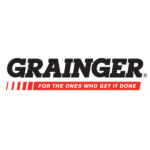
Grainger organizational culture integrates the following key elements: 1. Diversity and inclusiveness. Grainger organizational culture can be classified as inclusive. The B2B distributor places a great emphasis on diversity within the workforce and focuses on representation of minorities in the company. Grainger was named Best Company to work for Millenials by The Women’s Choice Award.[1] 2. Value for technology and innovation. The global industrial supply company duly recognizes the importance of technological innovation and attempts to adopt innovation approach to various business processes and problem solving constantly. 3. Focus on teamwork. The industrial supply company employs about 25000 people worldwide[2] and employees are organized into teams of varying sizes. The company attempts to extract maximum benefit from teamwork and promotes the values of collaboration and knowledge sharing across employees at all levels. Global MRO products distributor has the following mission statement that the company attempts to align with its corporate culture[3]: We keep the world working. As the way work gets done around the world continues to evolve, Grainger is here to serve customers like no one else can. According to framework of Harrison’s Model of Culture (1972), Grainger corporate culture can be classified as task culture. It worth to be specified that in organizations with task culture employee skills and competencies to deal with a task at hand play an integral role identification of a source of influence. In other words, the most experienced and competent team members have the highest influence in projects. W.W. Grainger Report contains the above analysis of W.W. Grainger organizational culture. The report illustrates the application of the major analytical strategic frameworks in business studies such as SWOT, PESTEL, Porter’s Five Forces, Value Chain analysis, Ansoff Matrix and McKinsey 7S Model on W.W. Grainger. Moreover, the report contains analyses of W.W. Grainger leadership, organizational…
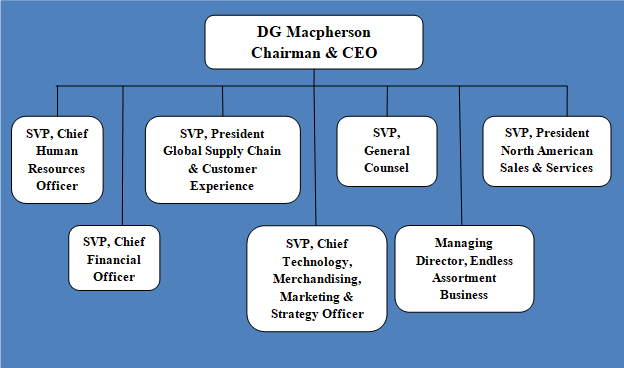
W.W. Grainger organizational structure can be classified as hierarchical. The decision making power is concentrated on the hands of Chairman and CEO DG Macpherson. The global industrial supply company maintains hierarchical type of organizational structure due to the massive size of the company that comprises about 2500 employees working in 457 branches, 31 distribution centres and offices worldwide.[1] Grainger organizational structure was subjected to major changes in 2013 “to provide greater focus and a more consistent integrated approach to pursue growth opportunities”[2]. Specifically, the B2B distributor established Americas business to include Canada, the U.S., Mexico, Panama, Puerto Rico, Dominican Republic, Costa Rica, Colombia and Peru. The figure below illustrates the top layer of Grainger organizational structure. Grainger Organizational Structure Hierarchical nature of Grainger corporate structure provides the worldwide distributor of industrial products a set of advantages. Specifically, the current pattern of Grainger corporate structure has a clear line of leadership, authority and responsibility. Moreover, hierarchical organizational structure is associated with employees having a narrow field of focus and accordingly, there is a potential for employees to become highly qualified experts in their fields. At the same time, hierarchical organizational structure is also linked to certain shortcomings that can have detrimental effects on Industrial products distributor’s long-term growth prospects. In hierarchical companies there is a risk of rivalry between different departments with negative implications for the overall profitability of the business. Moreover, centralization of power and authority at the highest level in hierarchical organizational structures may leave little room for initiatives for floor-level and medium level employees to adopt a creative and innovative approach to deal with various business processes. W.W. Grainger Report contains the above analysis of W.W. Grainger organizational structure. The report illustrates the application of the major analytical strategic frameworks in business studies such as SWOT, PESTEL, Porter’s Five Forces, Value Chain analysis, Ansoff Matrix and…
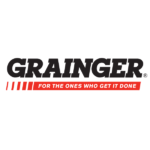
W.W. Grainger business strategy relies on two business models depending on the type of customer: high-touch solutions and endless assortment. High-touch solutions business model focuses on large companies with complex needs mainly in North America and Europe. The endless assortment business model, on the other hand, targets customers with less complex needs with a broad range of products sold online. Endless assortment business model comprises Zoro in the US and MonotaRO in Japan. Grainger business strategy consists of the following three elements: 1. Widest range of MRO products. An extensive assortment of products is Grainger’s unique selling proposition. The global industrial supply company sells about 1,7 million types of products supplied by about 5000 suppliers worldwide[1], along with offering value-added services such as inventory management and technical support. 2. Offering differentiated sales and services. Grainger pursues differentiation business strategy and differentiates sales and service practice on the grounds of speed and convenience. The global industrial supply company employs thousands of product segment specialists that can advice about technical aspects and specifications of products offered. Advanced onmi-channel sales practice is another ground for differentiation for Grainger. The industrial supply company utilizes a wide range of sales channels such as online, mobile devices, sales representatives, local branches and product vending machines on customer sites. 3. Many branches in strategic locations. Grainger is one of the B2B distributors with the most branches. The company has 31 distribution centres in strategic locations and 457 branches worldwide. In the US alone, the industrial supply company has 16 distribution centres, 249 stand-alone branches, 32 onsite branches and 2 will-call express locations.[2] The great numbers of branches and their strategic positioning allows Grainger to delivery MRO products to end-users in a shortest period of time. W.W. Grainger Report contains the above analysis of W.W. Grainger business…
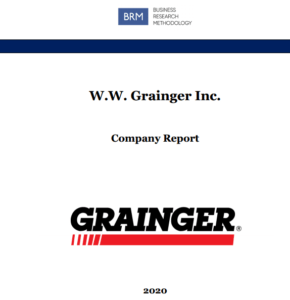
Founded in Illinois, US in 1928, W.W. Grainger Inc. is a B2B distributor of maintenance, repair and operating (MRO) products and services. The global industrial supply company has more than 3,5 million customers and about 25000 employees worldwide. (Fact Book, 2020). The global MRO products distributor works with approximately 5000 suppliers internationally. In 2019 Grainger generated revenues of USD 11,2 billion, 3% increase compared to the previous year (Annual Report, 2019). Grainger pursues differentiation business strategy. Specifically, the B2B distributor differentiates on the basis of products, offering the widest range of MRO product categories. Grainger’s use of differentiation business strategy also extends to differentiated sales and services. The company delivers its products with high level of speed and convenience and employs highly qualified sales representatives with deep technical knowledge. Grainger has hierarchical organizational structure and its organizational culture is based on diversity and inclusiveness and value for technology and innovation. Moreover, focus on teamwork can be highlighted as one of integral components of Grainger organizational culture. Business development strategy for the B2B distributor integrates market penetration, product development and market development strategies. The industrial products distributor immensely benefits from the economies of scale and the company has an extensive experience and knowledge in selling MRO products. At the same time, Grainger has certain weaknesses that can have negative implications on long-term growth prospects of the business. High level of indebtness is a major issue for the company and as of December 2019, Grainger’s consolidated debts amounted to USD 2,4 billion. Moreover, with total 72% of revenues generated in the US in 2019 (Fact Book 2020), the B2B distributor is over-dependent on the home market in the US. W.W. Grainger Inc. Report contains the application of the major analytical strategic frameworks in business studies such as SWOT, PESTEL, Porter’s Five Forces,…
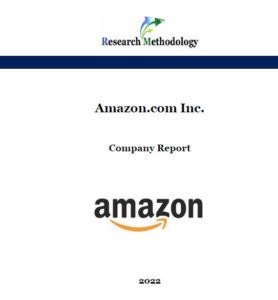
Amazon.com Inc. was founded in 1994 in Washington and Amazon.com as a website became first active in July 1995 to become the largest online retailer in the world to offer Earth’s Biggest Selection in less than two decades. The e-commerce and cloud computing company generated revenues of USD 386 billion and earned a net income of USD 21.3 billion in 2020 alone (Annual Report, 2020) The e-commerce giant employs approximately 1,3 million full-time and part-time employees referred to as Amazonians (Annual Report, 2020). Amazon has declared its adherence to four principles: customer obsession rather than competitor focus, passion for invention, commitment to operational excellence and long-term thinking. These principles represent sources of Amazon’s competitive advantage. Amazon business strategy is a hybrid of cost leadership and business diversification. The online retailer also benefits from encouraging communication between various elements within its ecosystem and promotion of its leadership principles consisting of 16 points discussed in this report. The founder and former CEO Jeff Bezos prefers to base business strategy on things that do not change. Specifically, consumers will always want low prices, variety and speedy delivery of their orders. Amazon focuses on these facts via effective integration of information technology into various business processes. Combination of pragmatist, visionary and autocratic leadership styles are exercised at various levels at Amazon. The company has a hierarchical organizational structure. Nevertheless, it remains highly flexible to adapt to frequent changes in the external marketplace. Amazon organizational culture, on the other hand, is based on the principles of high level of cost-consciousness, constant reinvention and improvement of organizational culture and customer obsession. Major weaknesses associated with Amazon include seasonality of the business, low profit margins and lack of focus on specific product or service categories. Moreover, a weak competitive position of Amazon’s Fire Phone and damage to…

Airbnb corporate social responsibility is closely associated with business model of the travel industry disruptor. It can be argued that travelling via Airbnb instead of hotels results in significant reduction in energy and water use, greenhouse gas emissions, and waste, and encourages more sustainable practices among both hosts and guests. CSR Programs and Initiatives Airbnb Supporting Local Communities Airbnb employees receive four hours of paid time off every month to volunteer in their local communities.[1] Global Citizenship Champion program launched in 2013 involves organizing charitable contributions to causes important to their local communities in 20 cities around the world Champions within the scope of Global Citizenship Champion program completed more than 17000 hours of service in 2016. Airbnb runs Open Homes program that provides homes for free to those affected by conflict, disaster, or critical illness. The program has helped more than 25,000 people in need to find temporary housing and in 2019 the company is investing USD 20 million to grow the platform. Airbnb aims to house 100,000 people by 2022.[2] Airbnb and Gender Equality and Minorities Diversity is one of the core values at Airbnb. 48.94% and 43.85% of employees are female, globally and in the US respectively. The figure 10 below illustrates race and ethnicity representation at Airbnb in the US. Ethnicity representation at Airbnb in the US Airbnb has “Diverse Candidate Slates” rule. For every open position, women and underrepresented minorities must be included on candidate slates before those slates are presented to hiring managers and the manager is allowed to proceed with filling the position.[3] The peer-to-peer lodging company has a wide range of Airfinity groups that create more awareness and advocacy around the issues employees value. Airfinity employee groups include Able@ for employees with disabilities, AirPride@ for LGBTQ people, Asians@, Black@, Foreignairs@, Juntos@,…
September 24, 2019
By John Dudovskiy
Category: Corporate Social Responsibility
Tags: hospitality, IT
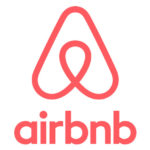
People-to-people platform of Airbnb benefits all its stakeholders, including hosts, guests, employees and the communities in which it operates. According to its CEO, Airbnb is “a more vertically integrated, end-to-end, full-stack ecosystem powered by people.”[1] Generally, Airbnb ecosystem can be divided into two groups: narrow and broad. Narrow Airbnb ecosystem comprises services that directly generate revenues for Airbnb, while broad ecosystem contributes to the development of peer-to-peer lodging, travel and experiences industry in general. Airbnb ecosystem in a narrow level integrates the following types of services: Accommodation Experiences Adventures Restaurants The travel industry disruptor supports stakeholders in its narrow ecosystem in various manners. For example, in a rare event of accidental damage, the property of every Airbnb host is covered up to a million dollars.[2] Airbnb has caused an ecosystem of new start-ups that produce products and services for peer-to-peer lodging industry. This can be specified as broad Airbnb ecosystem and includes a range of products and services. Table below illustrates the most popular types of such services referring to notable examples: Products and services within Airbnb ecosystems Notable examples Cleaning services of properties FlyCleaners: On-Demand Dry-Cleaning App Proply: Full-service cleaning, key delivery, welcome gifts and restocking Porter: laundry, cleaning, restocking Property management for hosts Guesty: responding to guest inquiries, screening potential guests, coordinating key exchange etc. Urban Bellshop: check-in, listing management, cleaning Nest: controlling temperature, Analytics Beyond Pricing: automated pricing suggestions Smart Host: pricing advice Everbooked: pricing suggestions based on a wide range of factors Services within broad Airbnb ecosystem Additional products and services within Airbnb broader ecosystem include automating check-in process, providing keyless entry around the clock, concierge services and welcoming guests and software products such as data presentation and analytics. Moreover, physical products such as toiletries, remote locks, and noise signallers and financing services for Airbnb hosts…
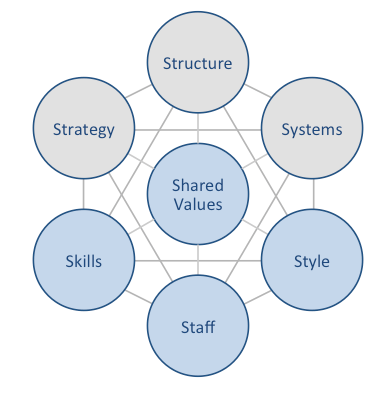
Airbnb McKinsey 7S model illustrates the ways in which seven elements of businesses can be aligned with positive implications on the overall effectiveness of the business. According to this framework strategy, structure and systems are grouped as hard elements, whereas shared values, skills, style and staff are considered soft elements. According to McKinsey 7S model, there are strong links between individual elements. Specifically, a change in one element causes changes in others. As it is illustrated in figure below, shared values are positioned at the core of Airbnb McKinsey 7S model; they guide employee behaviour with implications on their performance. Airbnb McKinsey 7S model Hard Elements in Airbnb McKinsey 7S model Strategy. Airbnb business strategy is associated with platform business model and accordingly, instead of owning the services it offers, the company engages as a broker between suppliers and consumers, receiving a commission of 9% to 15%. Moreover, increasing level of technological integration into various aspects of the business can be specified as one of the critical features of Airbnb business strategy. The global hospitality service brokerage company also places its community and trust among organizational stakeholders at the forefront of its business strategy. Structure. Airbnb organizational structure can be classified as matrix. The workforce is divided into teams of up to 10 people. Importantly, teams support each-other to a great extent. Team leaders and members feel free to ask other teams if they need resources or capabilities. Airbnb organizational structure can be also branded as holocratic, because decision making power is given to teams throughout organization to a great extent and majority of teams are self-managed. The corporate structure of Airbnb is highly dynamic due to rapidly increasing scale of the business worldwide. Systems. Airbnb business operations depend on a wide range of internal systems such as employee recruitment and…
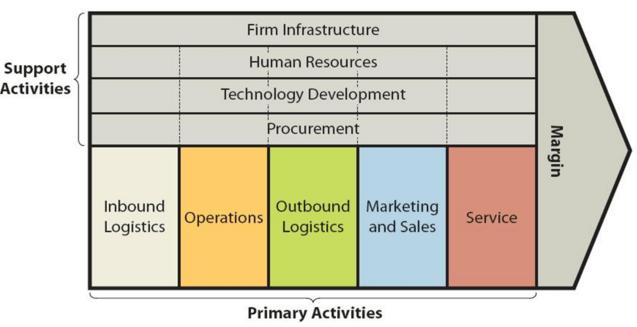
Airbnb value chain analysis is an analytical framework that assists in identifying business activities that can create value and competitive advantage to the global rental and experiences platform. Figure below illustrates the essence of Airbnb value chain analysis. Airbnb Value Chain Analysis Primary Activities in Airbnb Value Chain Analysis Airbnb Inbound logistics In traditional businesses inbound logistics involve receiving and storing raw materials to be used to manufacture products. Inbound logistics is different in service industry in general and online service in particular due to differences between products and services that include inseparability, intangibility, perishability and heterogeneity. From this perspective, Airbnb inbound logistics can be divided into two groups: 1. Inbound logistics related to core services. Core services for the company comprise peer-to-peer listings of accommodation, experiences and adventures. Airbnb inbound logistics for its core services takes a few minutes thanks to purely online nature of its business. Specifically, hosts can list their properties or experience services on the website of the lodging colossus on a matter of a few minutes. Therefore, inbound logistics of each new addition to its website comes for no extra cost for Airbnb. 2. Inbound logistics of resources and items that are used to aid the facilitation of core services. The global hospitality service brokerage company also uses a range of physical resources such as stationary items for its offices. Moreover, products like pillows and mugs, distributed to hosts occasionally to motivate them can also be mentioned as resources acquired by the travel industry disruptor to aid the facilitation of core services. Economies of scale can be specified as the main source of value addition in Airbnb inbound logistics of items that aid in facilitation of core services. Airbnb Operations Generally, operations involve the transformation of raw materials into finished products in manufacturing…
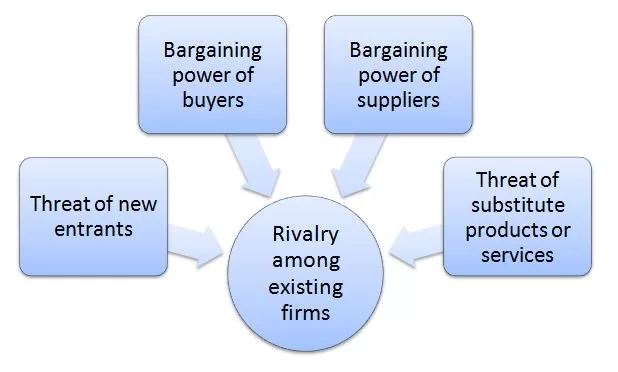
Porter’s Five Forces analytical framework developed by Michael Porter (1979)[1] represents five individual forces that shape an overall extent of competition in the industry. Airbnb Porter’s Five Forces Analysis are illustrated in Figure 1 below: Figure 1 Airbnb Porter’s Five Forces 1. Threat of new entrants in Airbnb Porter’s Five Forces Analysis The threat of new entrants into pear-to-pear lodging industry is low. Theoretically, setting up a website should suffice to enter the industry. However, in practice there is a number of barriers to potential new entrants into peer-to-peer lodging industry. These include the following: 1. The time of entry. In e-commerce the role of the first mover advantage is usually paramount and it is usually very difficult if at all possible for the followers to even get close to the market disruptor. Once their business model proved to be viable, internet-based market disruptors such as Amazon, Facebook and Uber were able to gain large market share in the global marketplace in a short amount of time. Funding from investors, word-of-mouth, effective management and hype usually play an instrumental role in assisting e-commerce disruptors to secure their niche and strengthen their position in international markets. This was the case with Airbnb as well. Founded in 2008, the company became a leading global hospitality service brokerage company within a matter of a few years. As of summer 2019, Airbnb boasts More than 6 million listings in more than 191 countries and regions worldwide.[2] The word Airbnb became a synonym for peer-to-peer lodging, leaving little room and market for potential new entrants. Nevertheless, it would be naive to claim that the threat of new entrants does not exist. There is no limit on the numbers of times that a market can be disrupted and as such, any new company with another innovative idea…
